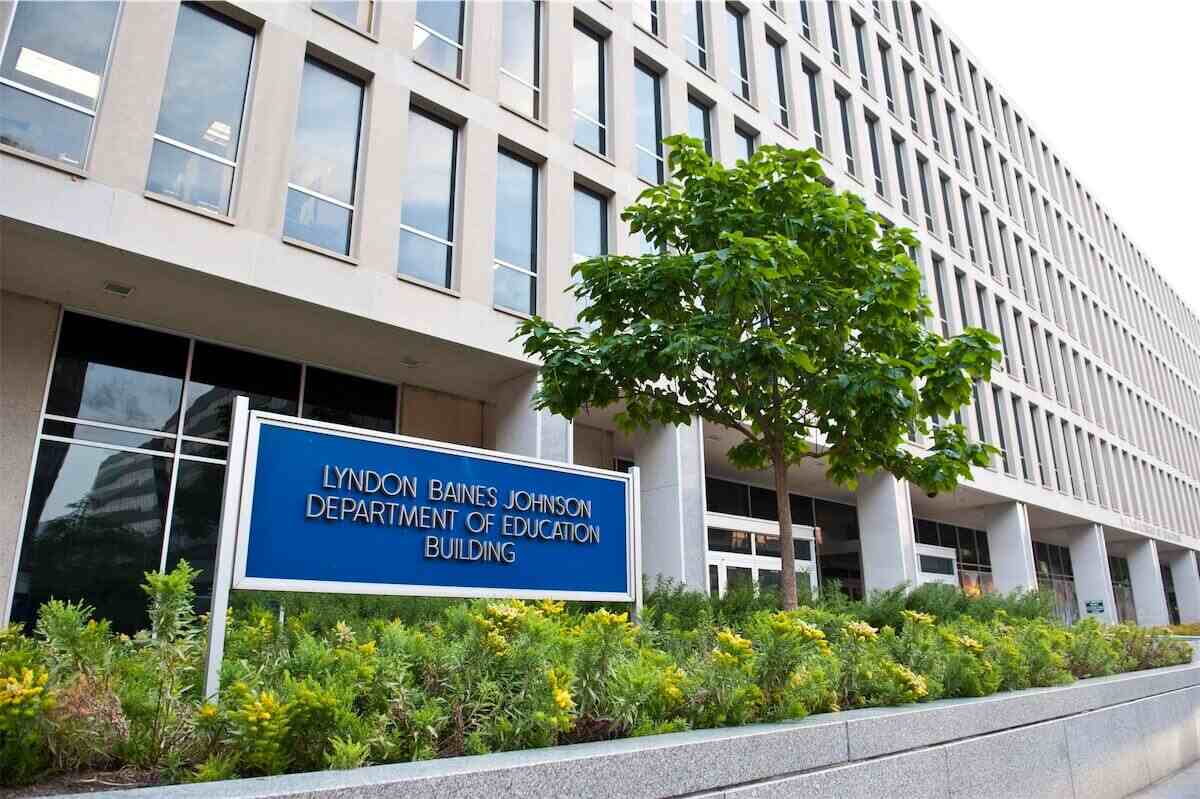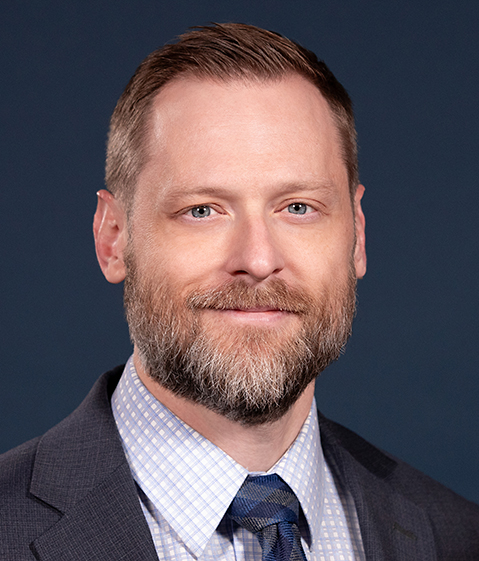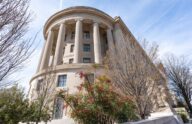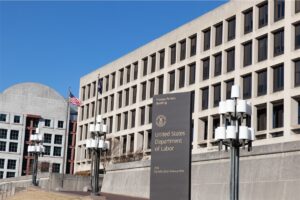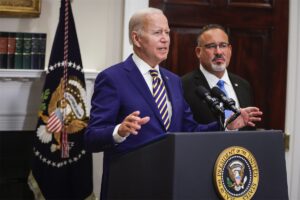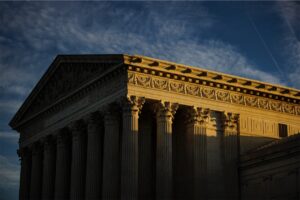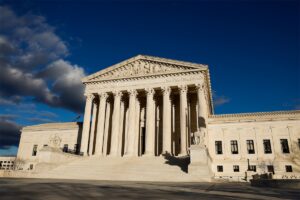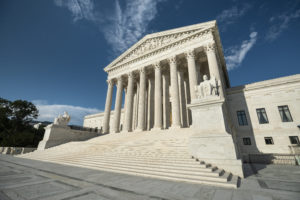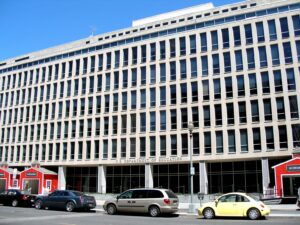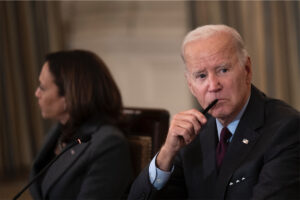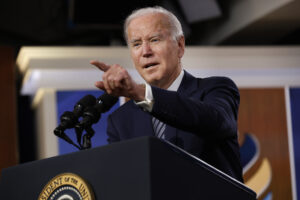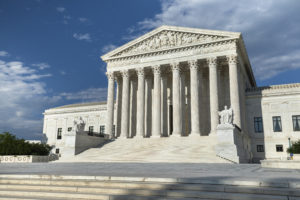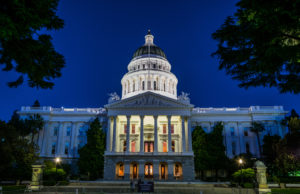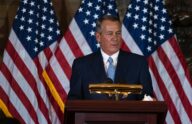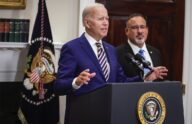On August 24, 2022, President Biden revealed his plans to cancel federal student debt. The announcement itself wasn’t much of a surprise. Student loan cancellation surfaced as an issue on his way to the White House and has continued to be discussed throughout the administration since he was elected.
The price tag was astonishing: Biden directed the Department of Education to cancel either $10,000 or $20,000 in student debt held by more than 40 million borrowers, for a one-time cost of more than $500 billion.
Most alarming, however, was the speed, informality, and utter lawlessness used to set the plan in motion. Not since President Trump imposed a nationwide eviction moratorium before the 2020 election has a president abused his power so blatantly.
Lacking legislative authority to carry out the president’s wishes, the Education Department turned to The HEROES Act. Enacted in 2003 in response to the Iraq war, The HEROES Act allows the government to modify loans to assist service members and their families as needed during times of war or other national emergencies.
The Education Department issued a memo insisting the military-focused HEROES Act granted the agency student debt-cancelling powers to combat the financial harms caused by the pandemic. But President Biden himself had recently declared that the pandemic “is over.” So The HEROES Act is a flimsy pretext for a major policy change that Congress has declined to enact. And even if the Education Department had this power, it should have gone through typical notice and comment rulemaking.
The first wave of cancellations was expected to launch in early October 2022, with automatic cancellations for 8 million borrowers in preexisting loan repayment programs.
That would have included Frank Garrison, a public interest attorney who holds federal student loan debt and received Pell Grants while in school. He had paid his loans for the prior six years as a part of a Public Service Loan Forgiveness program (PSLF). Congress created that program to incentivize nonprofit and public service by offering full loan forgiveness after 10 years of payments. Frank anticipated full forgiveness in approximately four years. His enrollment in PSLF means the ED’s new $20,000 loan cancellation will automatically apply to his loans.
Frank lives in Indiana, which would have taxed the cancellation as income but does not tax his future PSLF loan forgiveness. Frank will be stuck with a tax bill that makes him financially worse off than continuing with his repayment program under PSLF. He did not ask for cancellation, didn’t want it, and had no way to opt out of it.
Hundreds of thousands of public interest workers and public servants in at least six states—Indiana, Wisconsin, North Carolina, Minnesota, Mississippi, and Arkansas—would have been stuck in a situation similar to Frank’s, according to the White House’s fact sheet.
By deciding to work in public interest—now at Pacific Legal Foundation—Frank chose to take a lower salary than he could have earned in private practice, incentivized in part by Congress’ authorized forgiveness program. Now the president tried to change the rules in what was, by all appearances, a political move in advance of an election. But whatever the administration’s motives, the loan cancellation program was rushed and ill thought out, and would have had significant unintended consequences for borrowers, students, colleges, and the economy in general.
Among other effects, injecting $500 billion of government money into higher education debt likely would have raised college costs for everyone and saddled ordinary Americans with a debt they never incurred.
Loan cancellation is incredibly controversial—and very unpopular when Americans consider the cost. It would have inevitably led to greater divisions among Americans, as those who paid their loans or did not attend college—typically older and blue-collar Americans—would have good reason to think that we no longer have a government of, by, and for the people, but one that serves those with the loudest voices at any given moment or who are most like those in power.
This is why the Framers designed the Constitution as they did. The separation of powers ensures that no department of government can make unilateral decisions, and that laws come from the body that represents the people: Congress. Even when Congress does the wrong thing, the lawmaking process ensures that the people’s voices are heard. Ramming expensive and divisive programs down the throats of Americans through executive fiat is never a good idea.
On behalf of Frank and other borrowers like him, Pacific Legal Foundation filed the nation’s first lawsuit challenging the Education Department’s unacceptable abuse of executive authority to restore the rule of law and to enforce the Constitution’s separation of powers.
While Frank’s case was being litigated in the Seventh Circuit Court of Appeals, the Supreme Court issued a decision in another case—in which Pacific Legal Foundation filed an amicus brief—that found that The HEROES Act did not authorize the student debt cancellation and put an end to the program. As a result of the program being eliminated, Frank voluntarily dismissed his case.
What’s At Stake?
- Congress did not authorize the executive branch to unilaterally cancel student debt. It’s flagrantly illegal for the executive branch to create a $500 billion program by press release, and without statutory authority or even the basic notice and comment procedure for regulations.
- Cancelling student debt is unjust to those who have paid their loans or never took any. It will only lead to more calls for government intervention in education at taxpayers’ expense. It will make Americans more divided, as those who paid their loans—or never went to college—will have good reason to think that we no longer have a government of, by, and for the people.



